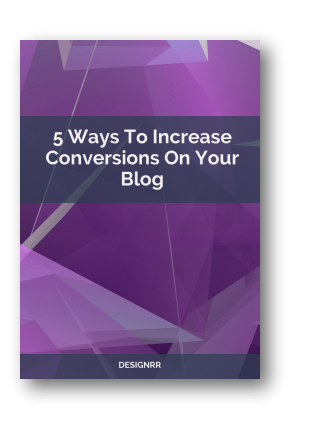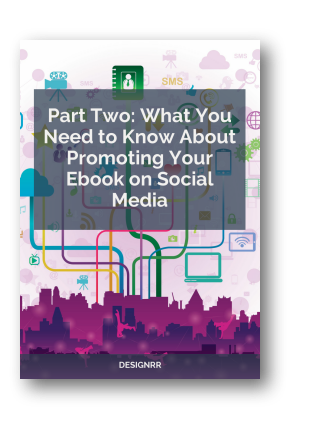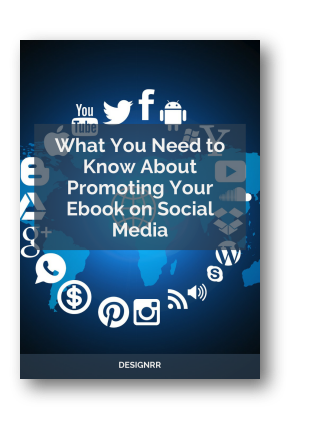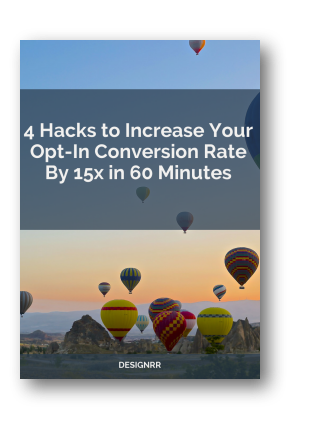Marketing is no longer about the stuff that you make, but about the stories you tell.” – Seth Godin.
Seth is right; marketing is indeed about storytelling. And inbound marketing exploits this truth in reeling in customers.
To make your business discoverable, inbound marketing strategies are geared at providing valuable information to customers. If your authority radiates through the content, they’ll seek your input.
Inbound marketing has been proven to be effective compared to its outbound counterpart for one sole reason: it’s not interruptive.
Customers are seeking the information, and you’re offering them content that matches their needs.

What are inbound marketing strategies and how can they benefit your business?
Inbound marketing focuses on drawing in customers by offering useful content and tailored experiences. Rather than disrupting potential clients with intrusive advertisements, the goal is to build genuine relationships by supplying relevant information, problem-solving resources, and captivating interactions.
Key tactics like content production, SEO, social media promotion, email marketing, and lead management help businesses effectively reach and engage their target market. The advantages of inbound marketing are manifold. It not only strengthens a company’s online presence and boosts brand recognition but also positions the business as a credible authority in its field.
This strategy generates high-caliber leads and steers more qualified visitors to a website, which in turn enhances conversion rates and sales. Plus, because of its inherent sustainability and scalability, inbound marketing proves to be a cost-effective approach for businesses, regardless of their size.
How inbound marketing differs from outbound marketing
Inbound marketing and outbound marketing serve as contrasting methodologies for customer engagement. Outbound marketing broadcasts a company’s message through avenues like advertising, cold calls, and direct mail, casting a wide net in the hope of capturing interest. In contrast, inbound marketing targets customers by offering them customized content and experiences to meet their specific needs.
Key strategies in inbound marketing include content creation, social media promotion, SEO, and email campaigns, all designed to organically attract customers by delivering useful information and solving their problems. Unlike the sometimes disruptive nature of outbound marketing, inbound marketing focuses on earning customer trust and fostering enduring relationships. By delivering valuable content and meaningful interactions, companies not only attract the right kind of attention but also generate quality leads that they can nurture into devoted customers.
This table summarizes how inbound and outbound marketing differ in their approaches, objectives, and outcomes:
| Aspect | Inbound Marketing | Outbound Marketing |
|---|---|---|
| Objective | Attract customers through valuable content | Push message to a broad audience |
| Methodology | Customized content and experiences | General advertising, cold calling, direct mail |
| Key Tactics | Content creation, SEO, social media, email | Traditional ads, telemarketing, billboards |
| Customer Interaction | Organic, builds long-term relationships | Often intrusive, short-term focus |
| Targeting | Specific needs and problems of customers | General appeal to a wide audience |
| Trust Building | High (offers value and solves problems) | Low (may be seen as interruptive) |
| Lead Quality | High-quality, specific leads | Varying quality, more quantity focused |
| Long-term Impact | Sustainable and scalable | Usually short-lived impact |
Types of inbound marketing strategies
There are several levels of inbound marketing. Each aspect of this marketing strategy plays a specific role in establishing your business as a dominant force in the industry.
The lure
In this phase of the marketing process, prospects are attracted to your website through a few unique ways. This could be through optimizing for search engines, pay per click, and others.
“Google only loves you when everyone else loves you first.” – Wendy Piersall
Wendy’s statement isn’t only restricted to Google; Bing and other search engines follow the same route in ranking your website for search result pages (SERP).
What does this mean for your business?
Prospects must find your content valuable; else, it’s a no-show for your business.
These search engines have different metrics to verify if the content truly resonates with your target audience. Keyword optimization isn’t enough anymore. High-tech algorithms applied by search engines have drilled nails into that coffin.
With the work involved in creating the desired content, many businesses would instead take the convenient route – pay-per-click (PPC).
By paying search engine platforms to put your business out there, you can get the ranking you desire. But like any approach that circumvents the norm of valuable content, this approach has its pitfalls.
Customers aren’t searching for suitable products; they are mostly searching for helpful content. Promoting your products at the top of the search result page would get you the barest of clicks with little or no conversion.
Prospects and customers tend to avoid such promotions as a plague – people aren’t enthusiastic about paid ads. But you can always promote helpful content and subtly promote your product. What could be more win-win than that?
Engage

“Getting the like is easy. It’s a light action. Anything else requires trust.”- Jon Loomer
Jon’s assertion holds in the inbound marketing strategy. You can lure customers to your website through valuable content, but getting them to ‘drink’ up those mouthwatering offers will require some level of trust in your credibility.
To get around this, avoid hitting them with offers, regardless of how ridiculously low your prices might be. Instead, focus on building a healthy relationship with them. Interact with them. Allow them to come forward with the challenges they are facing and provide your products as solutions to these problems.
This is the easiest way to keep your customers loyal to your brand.
Keep them happy

“A satisfied customer is the best form of advertisement” – G.S. Alag
You can’t fault Alag’s statement. A thoroughly pleased customer will speak for you in places you can’t possibly reach. Customers can open certain doors that are locked to anyone else. This reinforces the need to go beyond just offering a solution, but being a part of their journey.
Offer assistance when necessary as customers are humans – they remember the businesses that helped, even in the smallest of ways.
You can use the chatbox to communicate with the customers. This gives them the impression that you care about them beyond just getting their money.
There’s also the need to provide them with a sense of belonging by seeking their input through surveys. Customers are always happy when the business is about them. Making them a part of your brand’s story gives off that special vibes that get customers ecstatic about your enterprise.
While captivating your customers, endeavor to treat everyone equally. Never make any of them feel superior to the other, regardless of their spending power. Acting contrary to this could spell doom for the image of your brand.
What are some common inbound marketing techniques?
Here, we break down five quintessential inbound marketing methods, their mechanics, and their efficacy in attracting and retaining customers.
Content Marketing
What It Is
Content marketing involves the creation and distribution of high-quality material designed to provide value to your target audience. It is a cornerstone of inbound marketing because it pulls people towards your products or services.
How It Works
You create content in various forms—blog posts, articles, videos, and more—and distribute them through different channels, such as your website, blog, or social media platforms.
Why It’s Effective
Content marketing builds trust and establishes authority in your industry. It also improves your search engine rankings, making it easier for people to find you online.
Examples
- Blog posts that solve common problems in your industry
- How-to videos that guide viewers through a process
- Whitepapers that provide in-depth research and insights
Lure, Engage, Keep Them Happy
To attract customers, focus on solving their problems through your content. Once they arrive, provide additional resources or solutions to keep them engaged. Consistent quality will turn them into loyal followers.
Email Marketing
What It Is
Email marketing consists of sending targeted and personalized messages to a list of subscribers to build relationships and drive conversions.
How It Works
By using automated emails or newsletters, you provide consistent and relevant information to your audience, often segmenting your email list based on customer behavior.
Why It’s Effective
Emails allow for personalized communication, enabling you to build a deeper relationship with your audience. It is also highly measurable, offering insights into open rates, click-through rates, and conversion rates.
Examples
- Weekly newsletters that offer tips and tricks
- Personalized promotional offers based on browsing history
- Follow-up emails to encourage reviews or feedback
Lure, Engage, Keep Them Happy
A compelling subject line attracts opens, and valuable content keeps readers engaged. Regular updates and exclusive offers will retain them over the long term.
SEO (Search Engine Optimization)
What It Is
SEO involves optimizing your website and online content to improve its visibility in search engine results for relevant keywords.
How It Works
By optimizing website structure, meta descriptions, and keyword usage, you aim to rank higher in search results. This boosts organic traffic to your website.
Why It’s Effective
SEO makes your website more visible to those actively searching for information, products, or services related to your business.
Examples
- Implementing keyword-rich headings and titles
- Regularly updating a blog with valuable, SEO-friendly articles
- Building high-quality backlinks from reputable websites
Lure, Engage, Keep Them Happy
Ranking for the right keywords will draw in targeted traffic. A user-friendly website and valuable content will engage them, and continual SEO updates will ensure that you maintain a high ranking, keeping your audience satisfied.
Social Media Marketing
What It Is
Social media marketing focuses on creating and sharing content on social media platforms to achieve your business goals, such as brand awareness or increased sales.
How It Works
Through regular posting and engagement, you interact with your audience on platforms where they spend a significant amount of time.
Why It’s Effective
Social media platforms offer the opportunity to interact directly with your audience, offering immediate feedback and fostering a community around your brand.
Examples
- Sharing customer testimonials and success stories
- Hosting live Q&A sessions on platforms like Facebook and Instagram
- Posting behind-the-scenes looks at your company
Lure, Engage, Keep Them Happy
Eye-catching visuals and compelling headlines will attract attention. Consistent engagement and meaningful interaction will turn followers into advocates.
Webinars and Infographics
What It Is
Webinars and infographics are formats of educational content that provide in-depth information in an engaging way.
How It Works
Webinars are live or pre-recorded online presentations, while infographics are visual representations of information, data, or knowledge.
Why It’s Effective
These formats make complex information easy to digest and share, broadening your reach and establishing your brand as a go-to resource.
Examples
- A webinar discussing industry trends and predictions
- An infographic summarizing the steps of a complex process
Lure, Engage, Keep Them Happy
Attractive titles and relevant topics will draw viewers in. The quality of the presentation and information will engage them, while follow-up materials like recap emails or related content offers will keep them coming back for more.
Podcasts
What It Is
Podcasting involves creating audio content that can be easily distributed and listened to via various platforms.
How It Works
You create a series of audio episodes around topics relevant to your industry or business, and distribute them on podcast directories like Apple Podcasts or Spotify.
Why It’s Effective
Podcasts can establish your brand as a thought leader and create a strong, loyal following. They’re easily consumable, often enjoyed while multitasking, which makes them particularly appealing to busy professionals.
Examples
- Interviews with industry leaders
- Roundtable discussions on current trends
Lure, Engage, Keep Them Happy
Choose topics that resonate with your target audience to draw them in. Keep the content engaging and high-quality to retain listeners. Regular episodes and listener engagement can help create a community around your brand.
Chatbots and Automated Messaging
What It Is
Chatbots are AI-driven tools that interact with users on your website, guiding them through queries and actions.
How It Works
The chatbot pops up on your website to assist visitors in real-time, directing them to relevant content or answering their questions.
Why It’s Effective
Chatbots provide immediate responses, improving user experience, and can effectively guide potential leads through the sales funnel.
Examples
- Customer service bots that handle FAQs
- Sales bots that offer personalized product recommendations
Lure, Engage, Keep Them Happy
Immediate assistance and relevant information will attract and engage users. Over time, intelligent chatbot interactions can significantly enhance customer satisfaction.
Video Marketing
What It Is
Video marketing involves creating video content aimed at promoting your products or services.
How It Works
Create engaging video content and distribute it through various platforms such as YouTube, social media, or your website.
Why It’s Effective
Video content can be more engaging than text and can convey complex information in a digestible manner.
Examples
- Product demos
- Customer testimonials in video format
Lure, Engage, Keep Them Happy
High-quality videos that offer entertainment or valuable information will attract viewers. Keeping your content fresh and up-to-date will make them stay.
Final thoughts
Inbound marketing has its perks. Being non-interruptive, conversions are bound to be higher compared to the outbound variant. Interestingly, businesses are cashing in on its many advantages.
However, many of these enterprises appear to skip certain phases of the journey, jeopardizing the potential of taking their business to the next level. Hopefully, this article helps you to avoid being added to this number.






